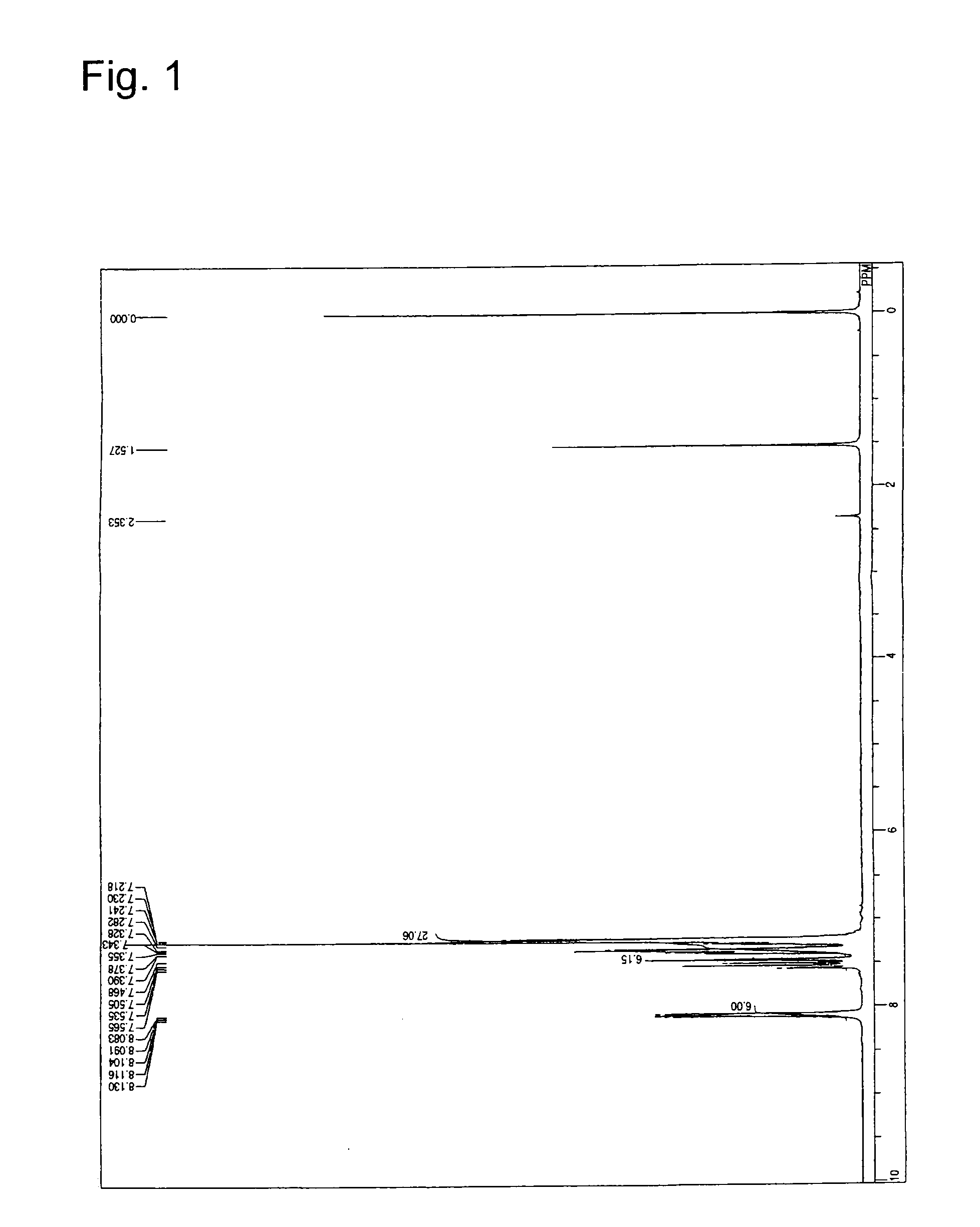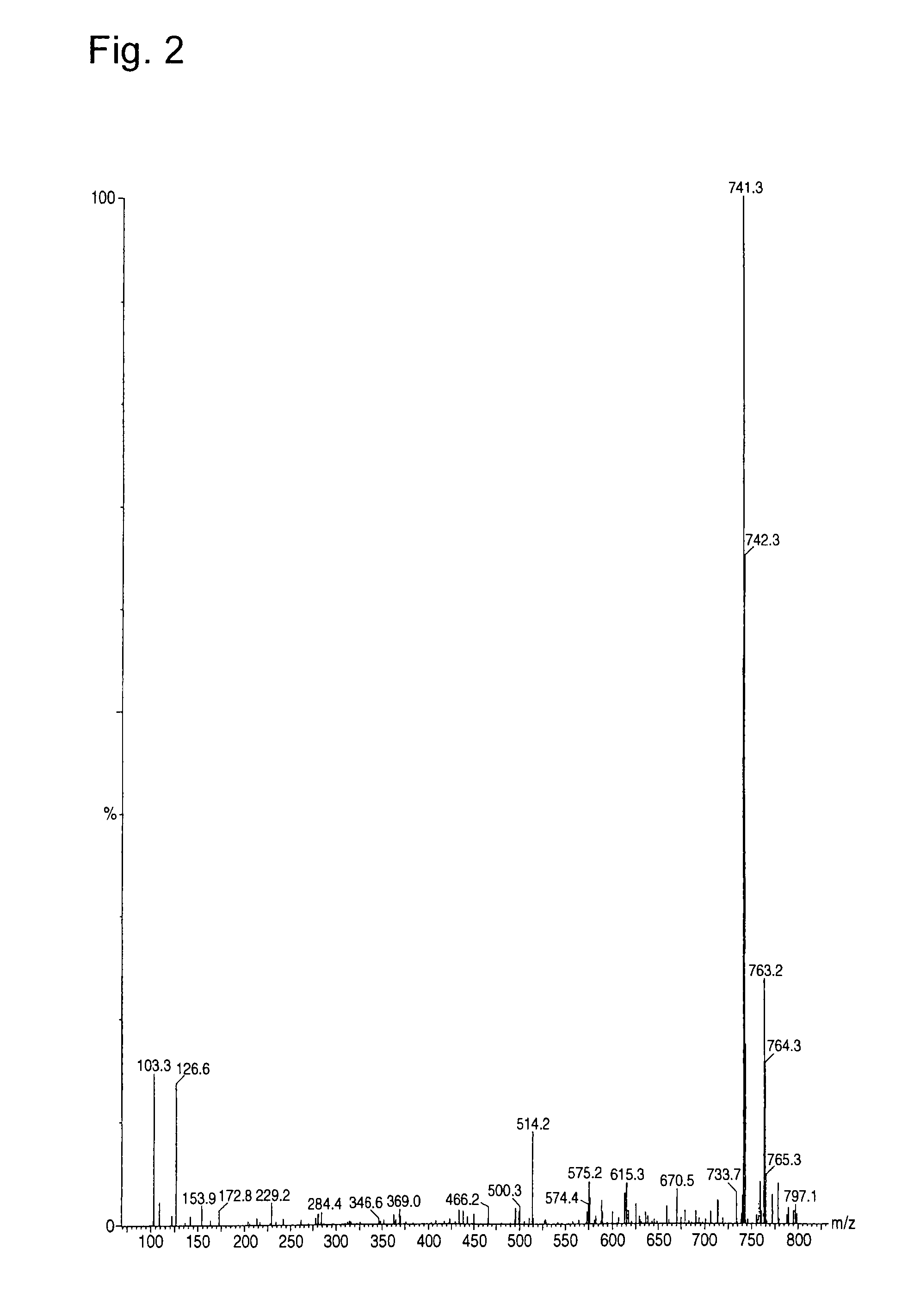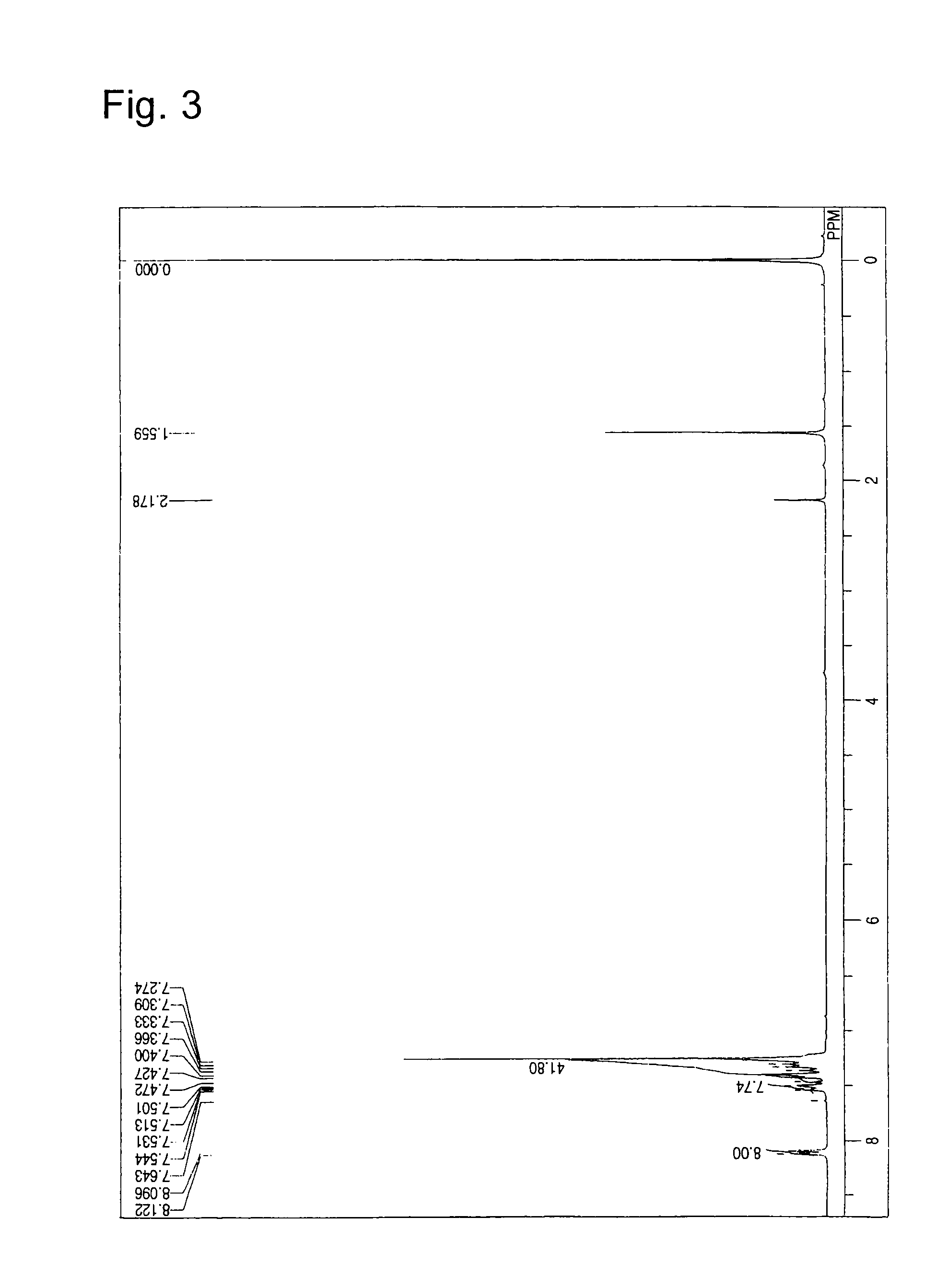M-carbazolylphenyl compounds
a technology of carbazolylphenyl and compound, which is applied in the direction of discharge tube luminescent screen, other domestic articles, organic chemistry, etc., can solve the problems of poor stability in a thin film state and inability to obtain satisfactory device characteristics, and achieve high efficiency and high luminous organic electroluminescence
- Summary
- Abstract
- Description
- Claims
- Application Information
AI Technical Summary
Benefits of technology
Problems solved by technology
Method used
Image
Examples
example 1
Synthesis of tris[3-(carbazol-9-yl)phenyl]amine (Hereinafter Referred to as mTCTA) (Compound 2)
[0056]5.5 g of bis[3-(carbazol-9-yl)phenyl]amine, 4.9 g of 9-(3-iodophenyl)carbazole, 2.1 g of sodium tert-butoxide, 0.1 g of palladium acetate, and 50 ml of anhydrous toluene were added in a flask under a nitrogen atmosphere. At an inner temperature of 71° C., 0.4 g of tert-butylphosphine was added by using a syringe. After 10 hours of reaction at 100° C., 300 ml of toluene was added to extract the objective substance, followed by filtration. The filtrate was concentrated to dryness to obtain a crude product. The dried crude product was purified by column chromatography to obtain 5.3 g (yield 56%) of mTCTA (Compound 2). The product was identified by 1H-NMR analysis (see FIG. 1). The following 36 hydrogen atoms were detected upon 1H-NMR (CDCl3) analysis. δ (ppm): 8.083-8.130 ppm (6H), 7.468-7.565 ppm (6H), 7.128-7.390 ppm (24H).
[0057]Furthermore, molecular weight of the product was analyze...
example 2
Synthesis of N,N,N′,N′-tetrakis[3-(carbazol-9-yl)phenyl]-4,4′-biphenyldiamine (Compound 3)
[0058]1.50 g of bis[3-(carbazol-9-yl)phenyl]amine, 374 mg of 4,4′-dibromobiphenyl, 370 mg of sodium tert-butoxide, 12 mg of palladium acetate[II], and 10 ml of anhydrous toluene were added in a flask under a nitrogen atmosphere. At an inner temperature of 80° C., 42 mg of tert-butylphosphine was added by using a syringe. After 6 hours of reaction at 80° C., 50 ml of toluene was added to extract the objective substance, followed by filtration. The filtrate was concentrated to dryness to obtain a crude product. The dried crude product was purified by column chromatography to obtain 880 mg (yield 61%) of Compound 3 as a white solid. The product was identified by 1H-NMR analysis (see FIG. 3). The following 56 hydrogen atoms were detected upon 1H-NMR (CDCl3) analysis. δ (ppm): 8.096-8.122 ppm (8H), 7.501-7.643 ppm (8H), 7.274-7.472 ppm (40H).
[0059]Further, the glass transition temperature, which is ...
example 3
Synthesis of 1,3,5-tris[3-(carbazol-9-yl)phenyl]benzene (Compound 4)
[0060]1.00 g of 1,3,5-(3-bromophenyl)benzene, 1.00 g of carbazole, 38 mg of copper powder, and 1.10 g of potassium carbonate were added in a flask under a nitrogen atmosphere. After the whole was heated to an inner temperature of 170° C. and reacted for 20 hours, 50 ml of purified water was added thereto. After 1 hour of stirring at 90° C., insoluble matter was collected by suction filtration. After the insoluble matter was dissolved in tetrahydrofuran, copper powder was removed by suction filtration. The filtrate was concentrated to dryness to obtain a crude product. The dried crude product was purified by column chromatography to obtain 240 mg (yield 16.7%) of Compound 4 as a white solid. The product was identified by 1H-NMR analysis (see FIG. 4). The following 39 hydrogen atoms were detected upon 1H-NMR (CDCl3) analysis. δ (ppm): 8.124-8.153 ppm (6H), 7.887 ppm (6H), 7.568-7.798 ppm (9H), 7.155-74590 ppm (18H). F...
PUM
| Property | Measurement | Unit |
|---|---|---|
| external quantum efficiency | aaaaa | aaaaa |
| quantum efficiency | aaaaa | aaaaa |
| temperature | aaaaa | aaaaa |
Abstract
Description
Claims
Application Information
 Login to View More
Login to View More - R&D
- Intellectual Property
- Life Sciences
- Materials
- Tech Scout
- Unparalleled Data Quality
- Higher Quality Content
- 60% Fewer Hallucinations
Browse by: Latest US Patents, China's latest patents, Technical Efficacy Thesaurus, Application Domain, Technology Topic, Popular Technical Reports.
© 2025 PatSnap. All rights reserved.Legal|Privacy policy|Modern Slavery Act Transparency Statement|Sitemap|About US| Contact US: help@patsnap.com



